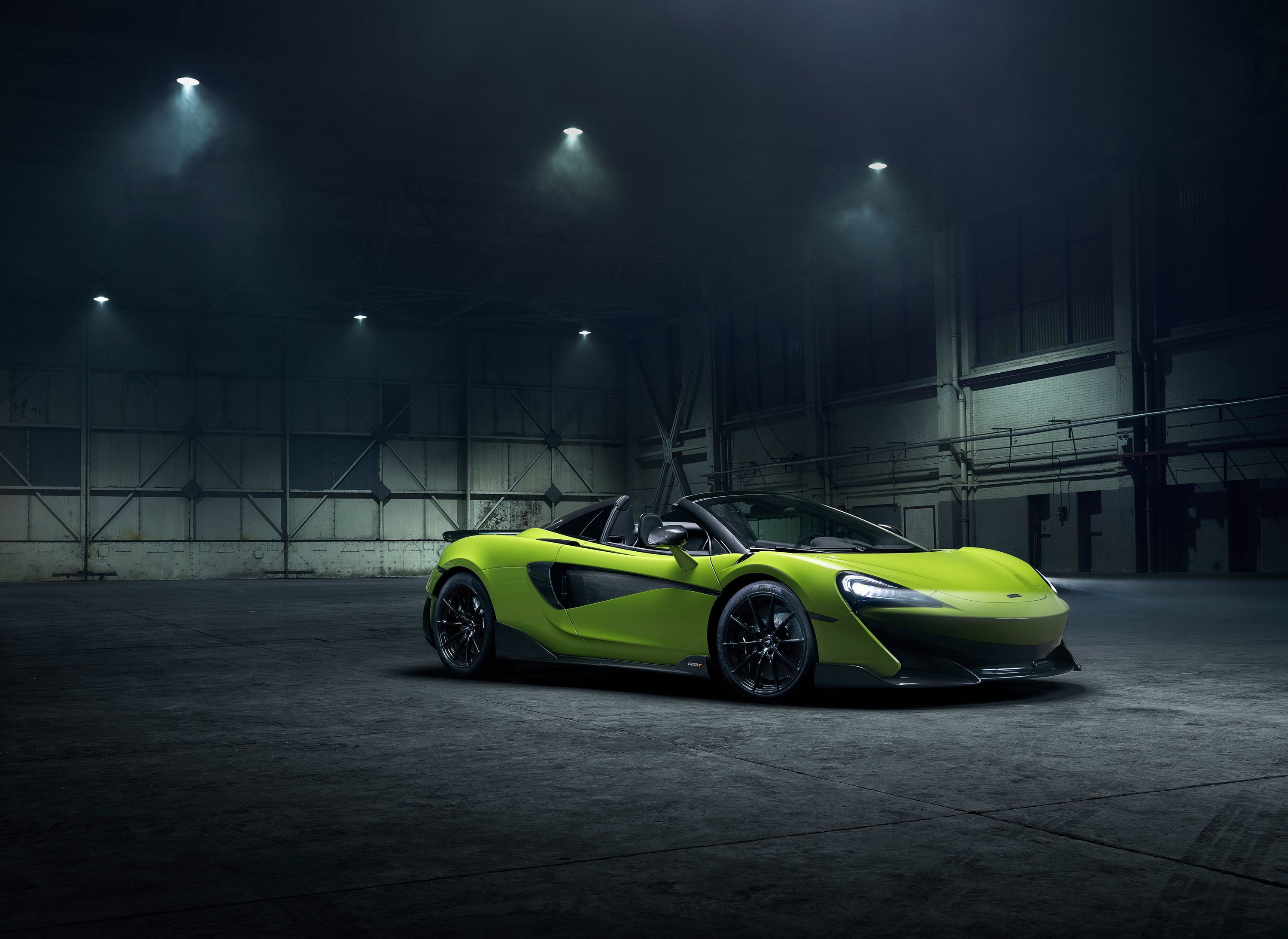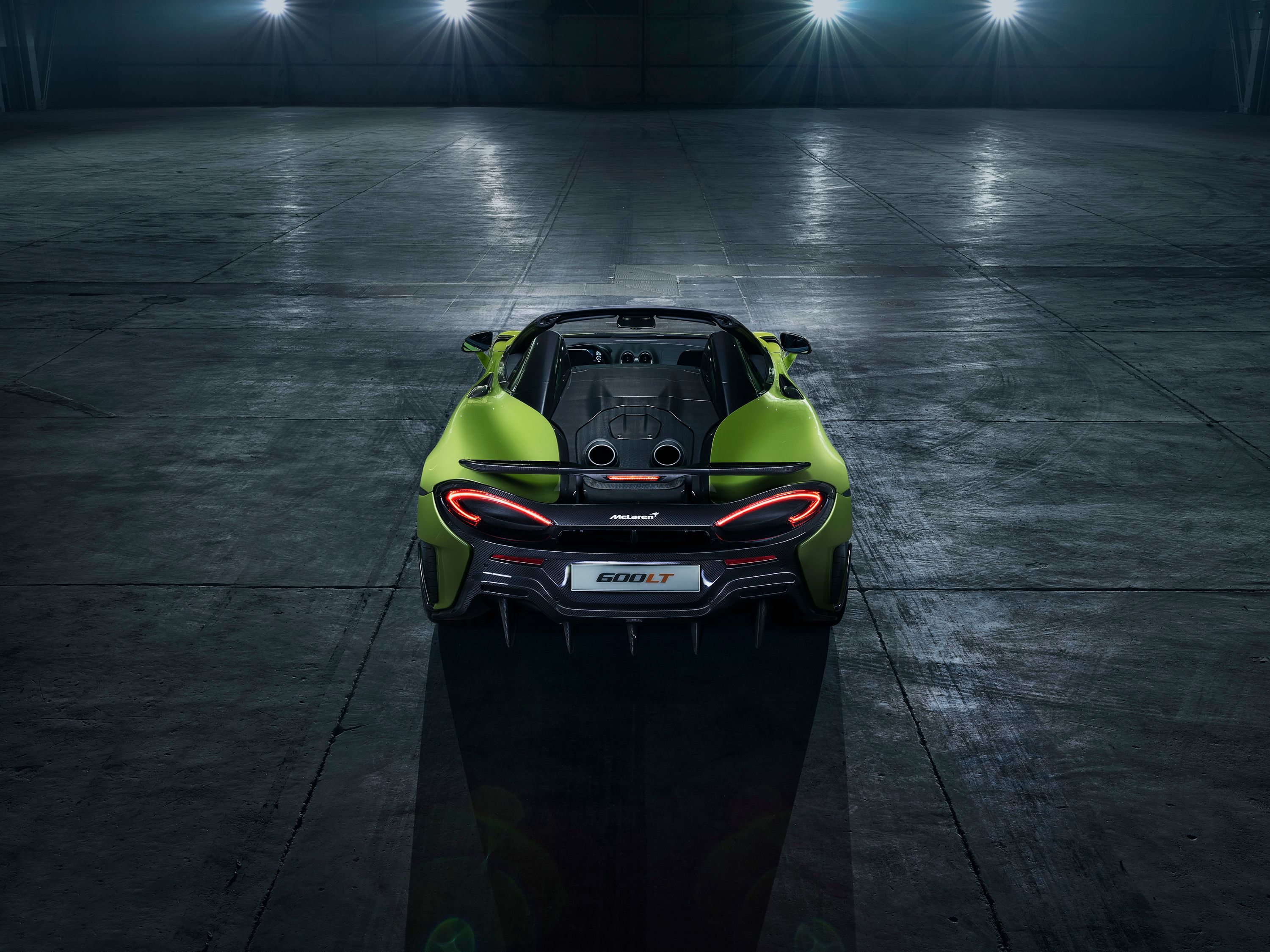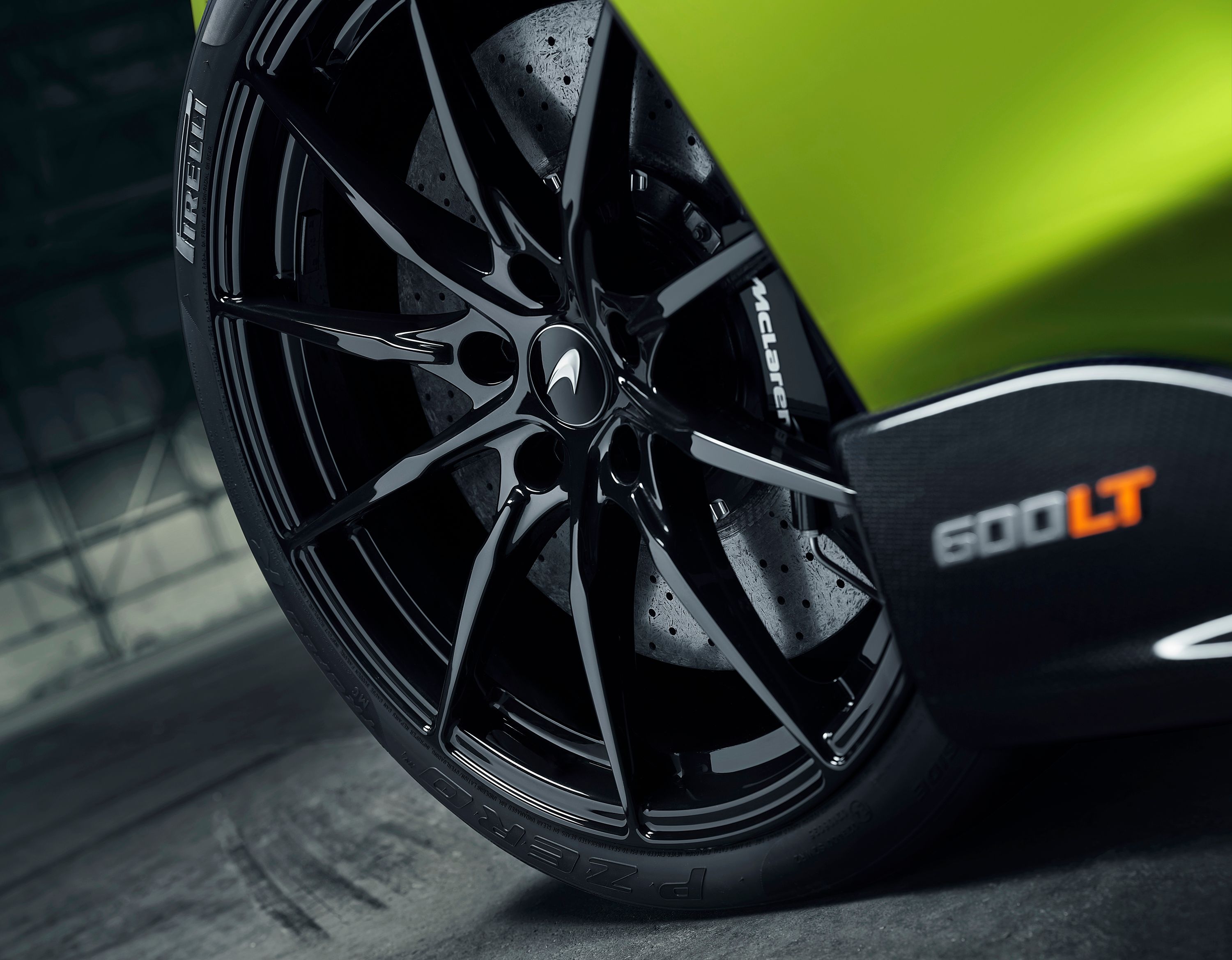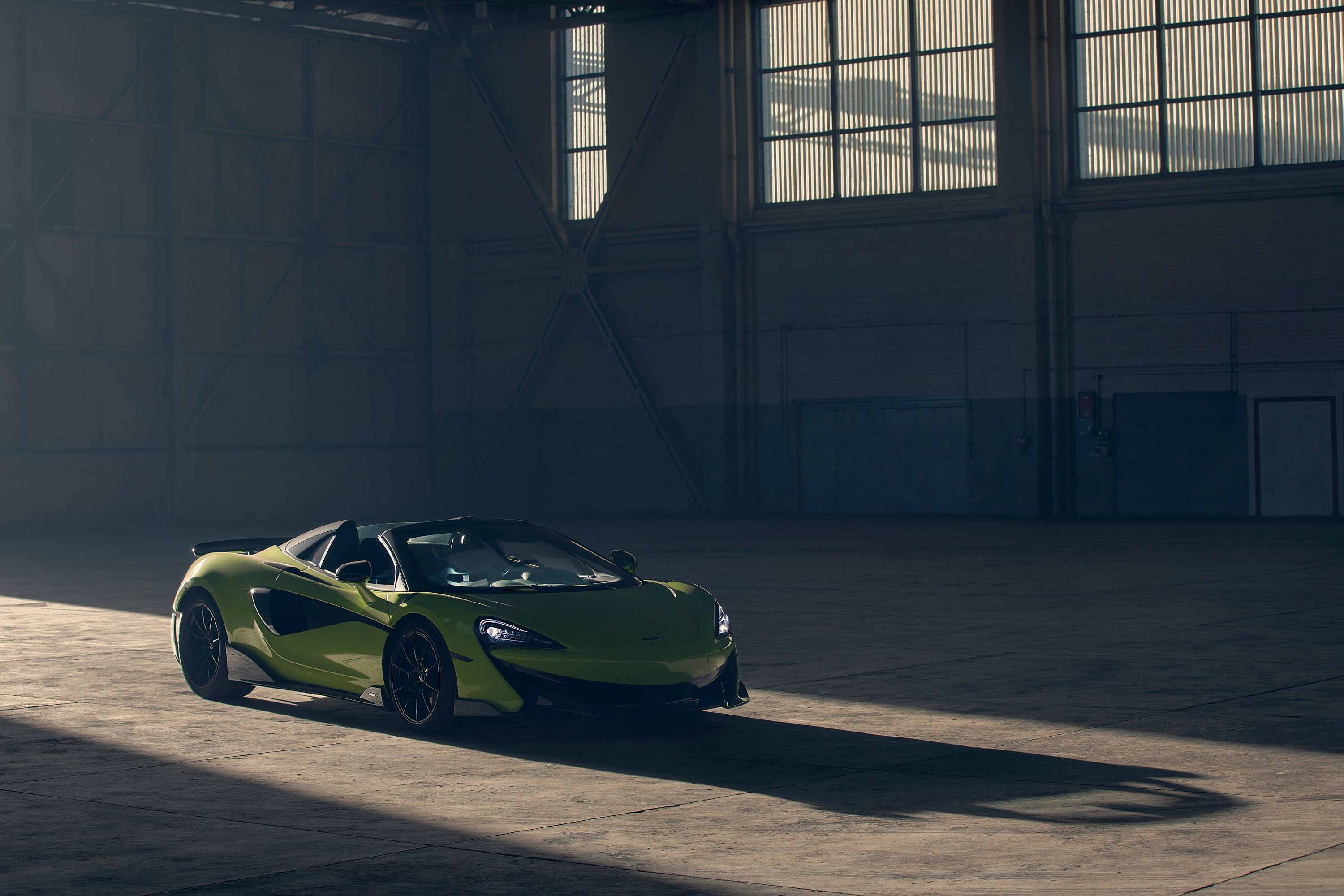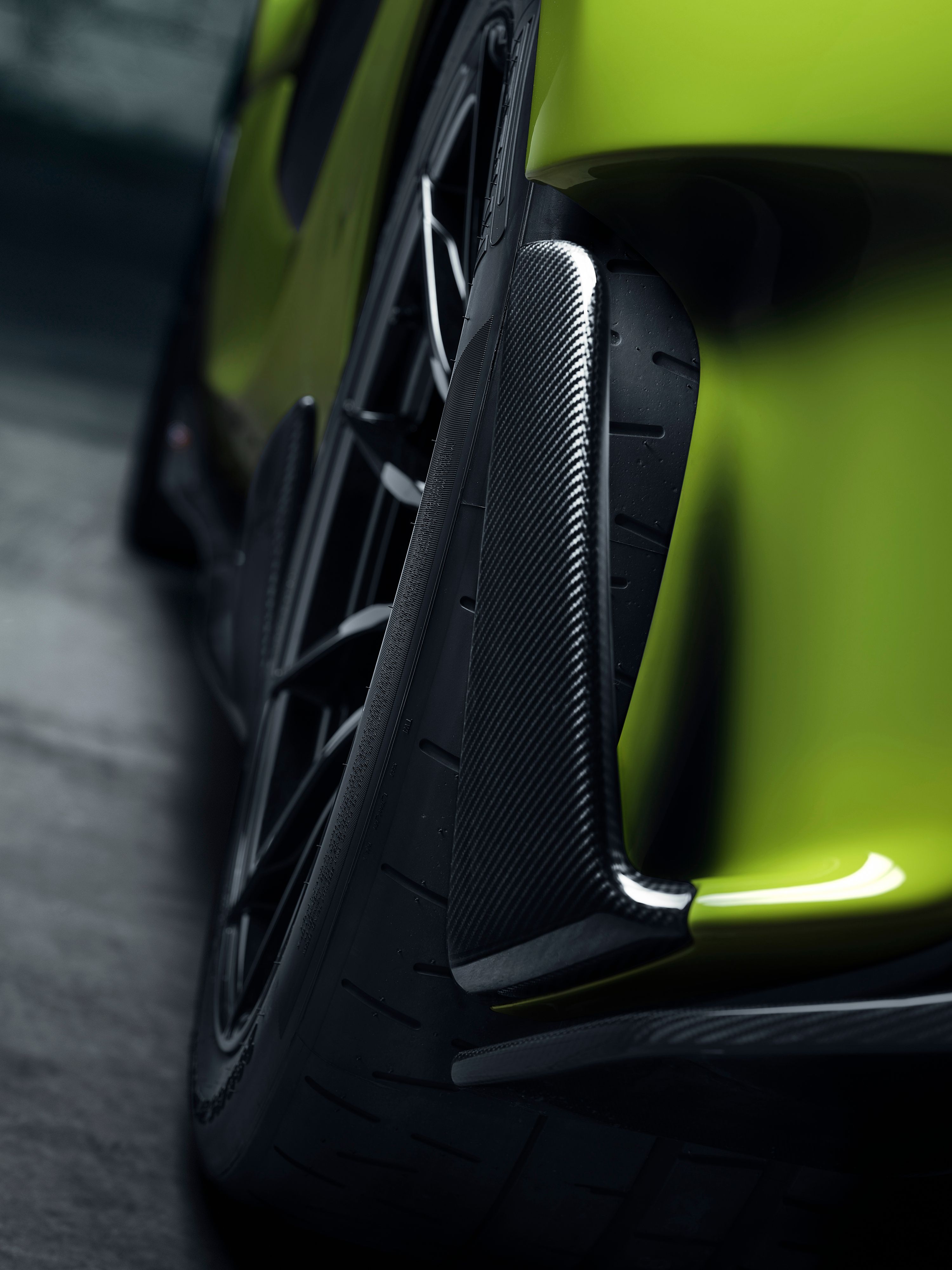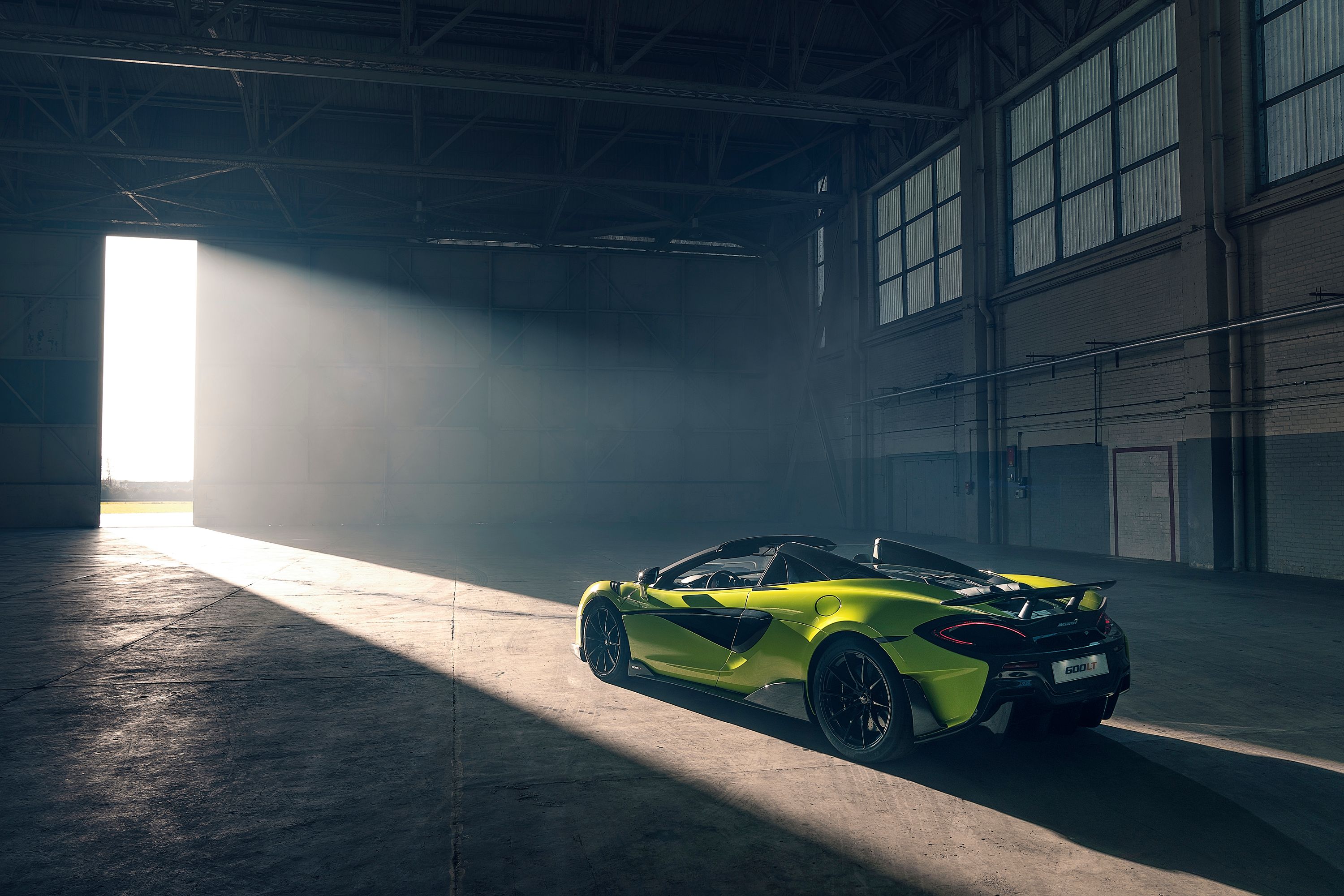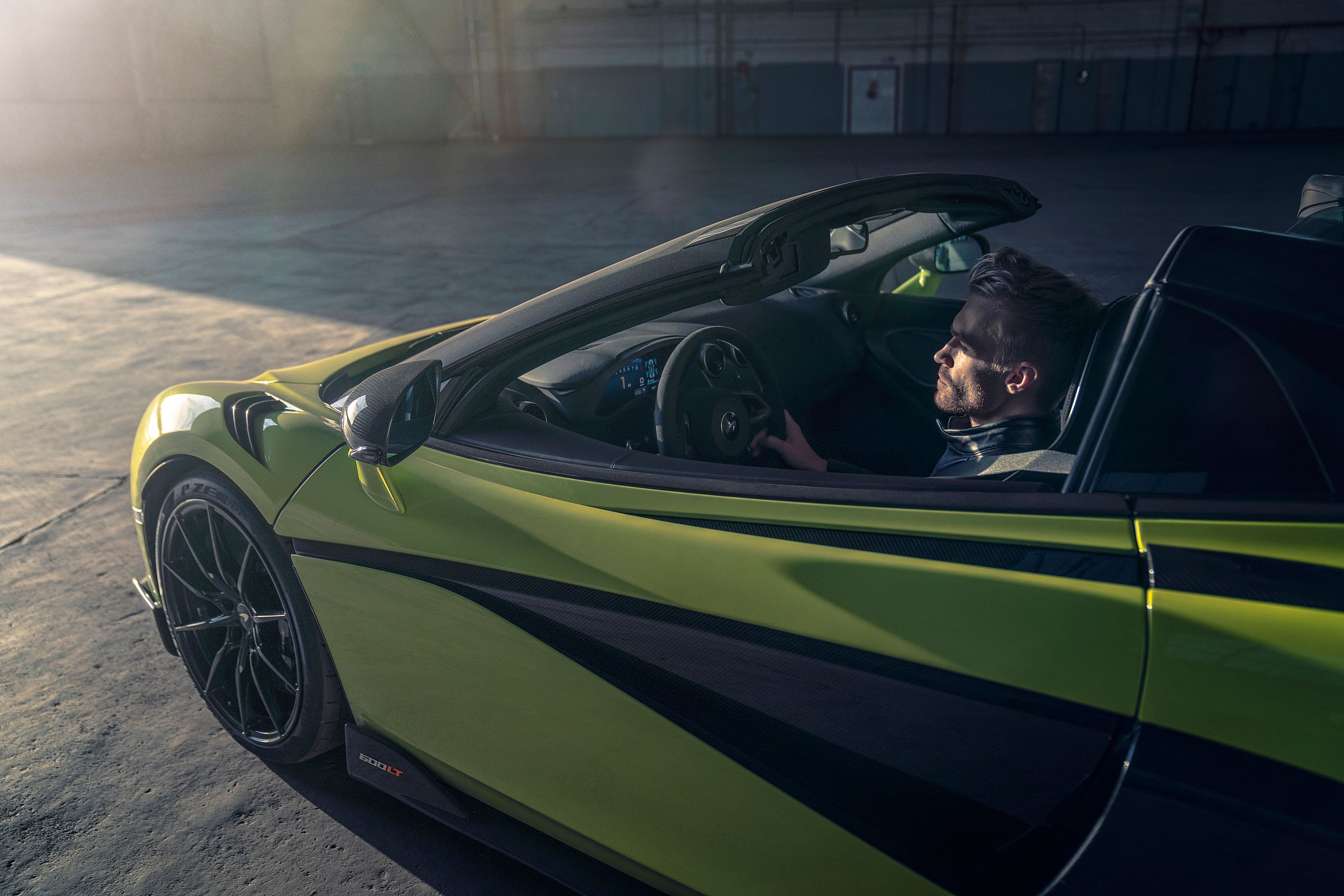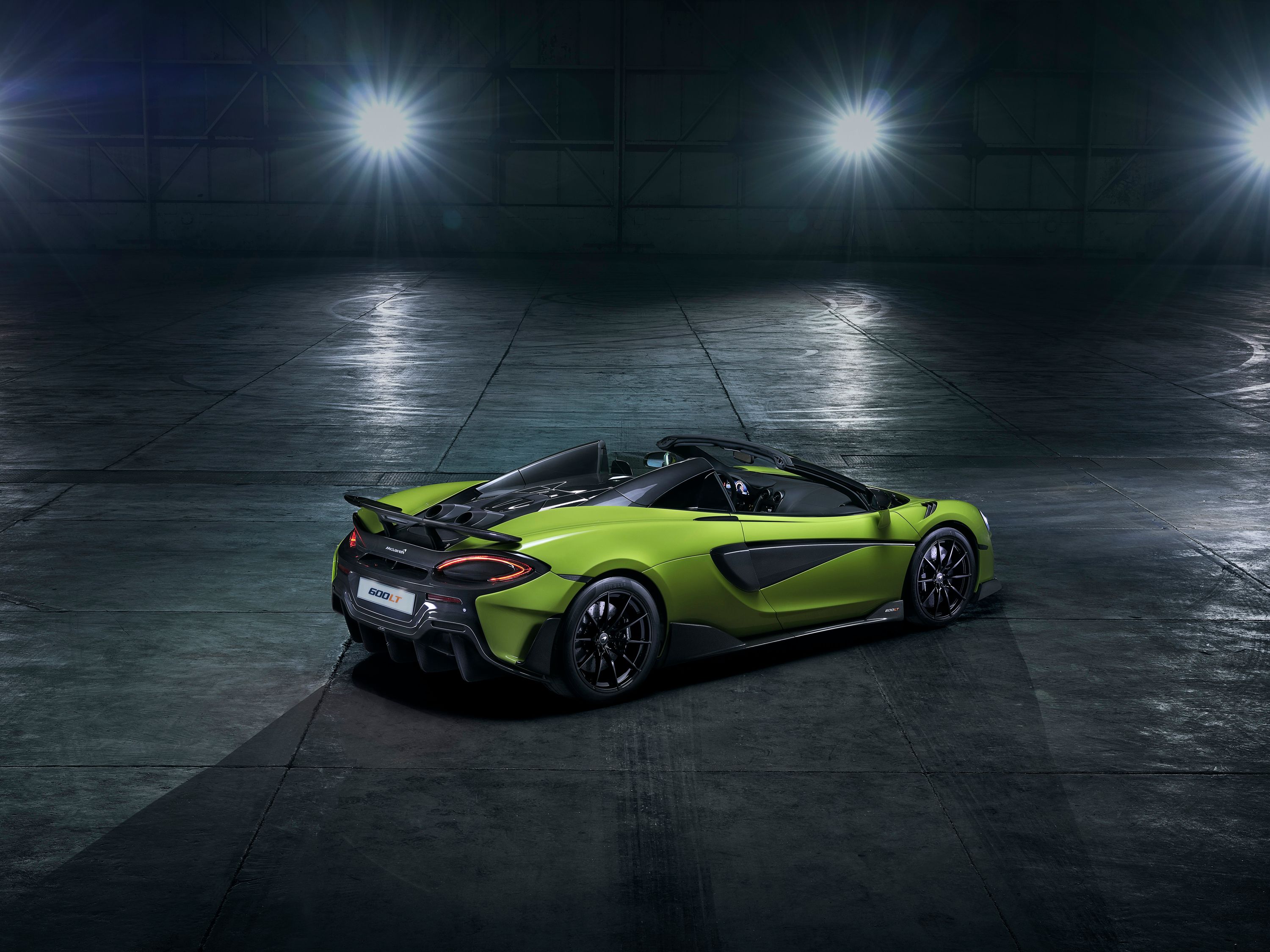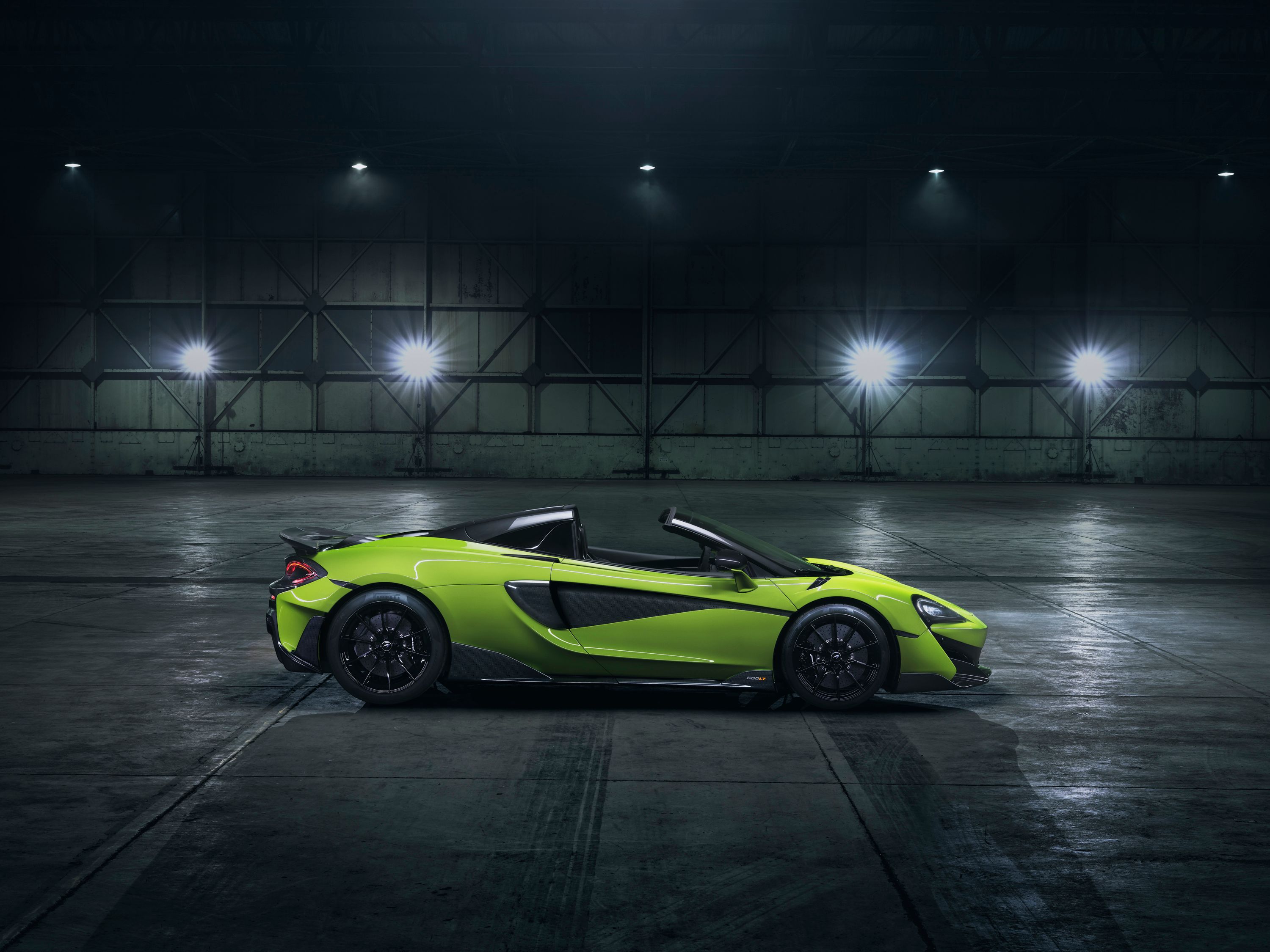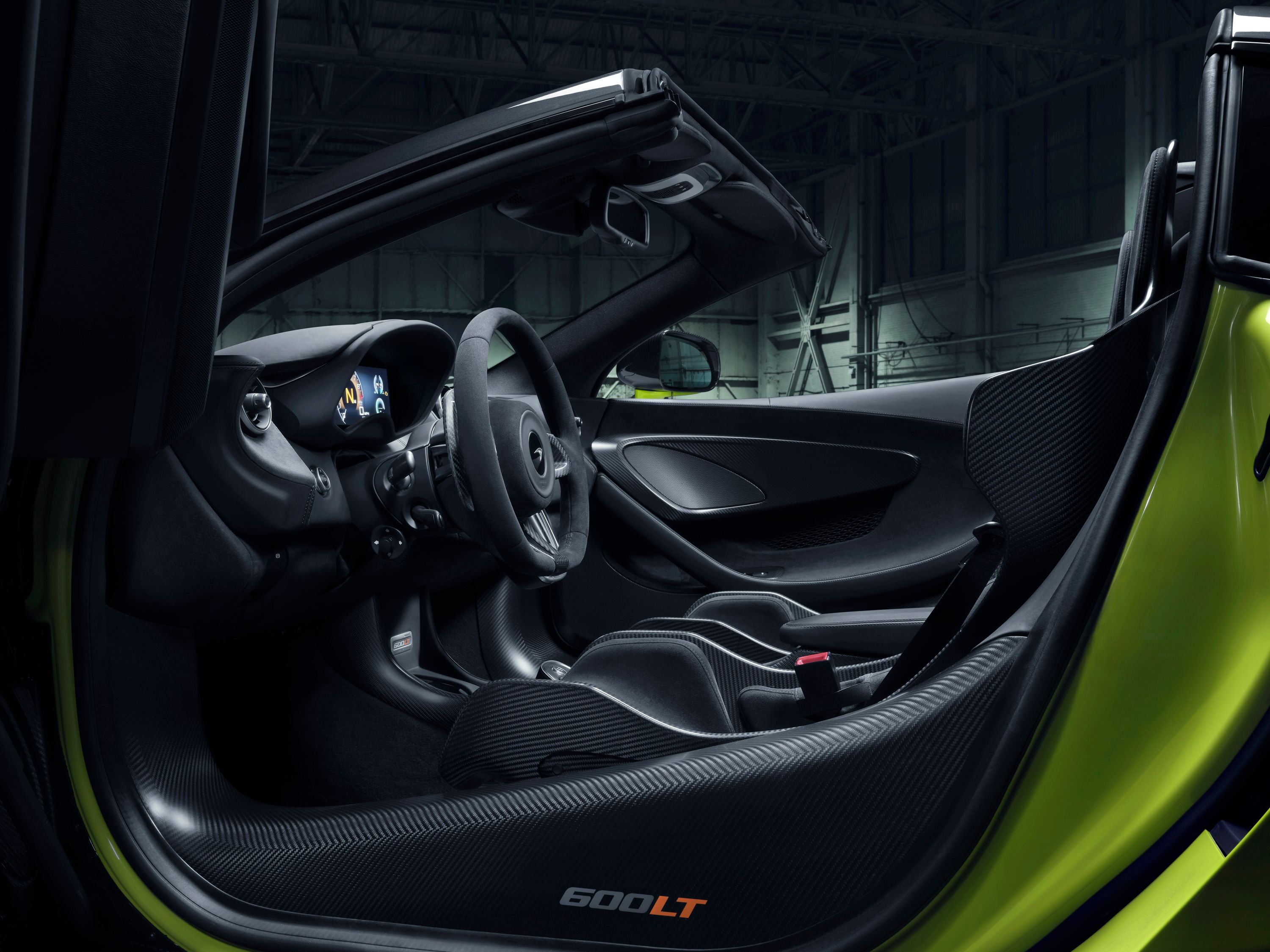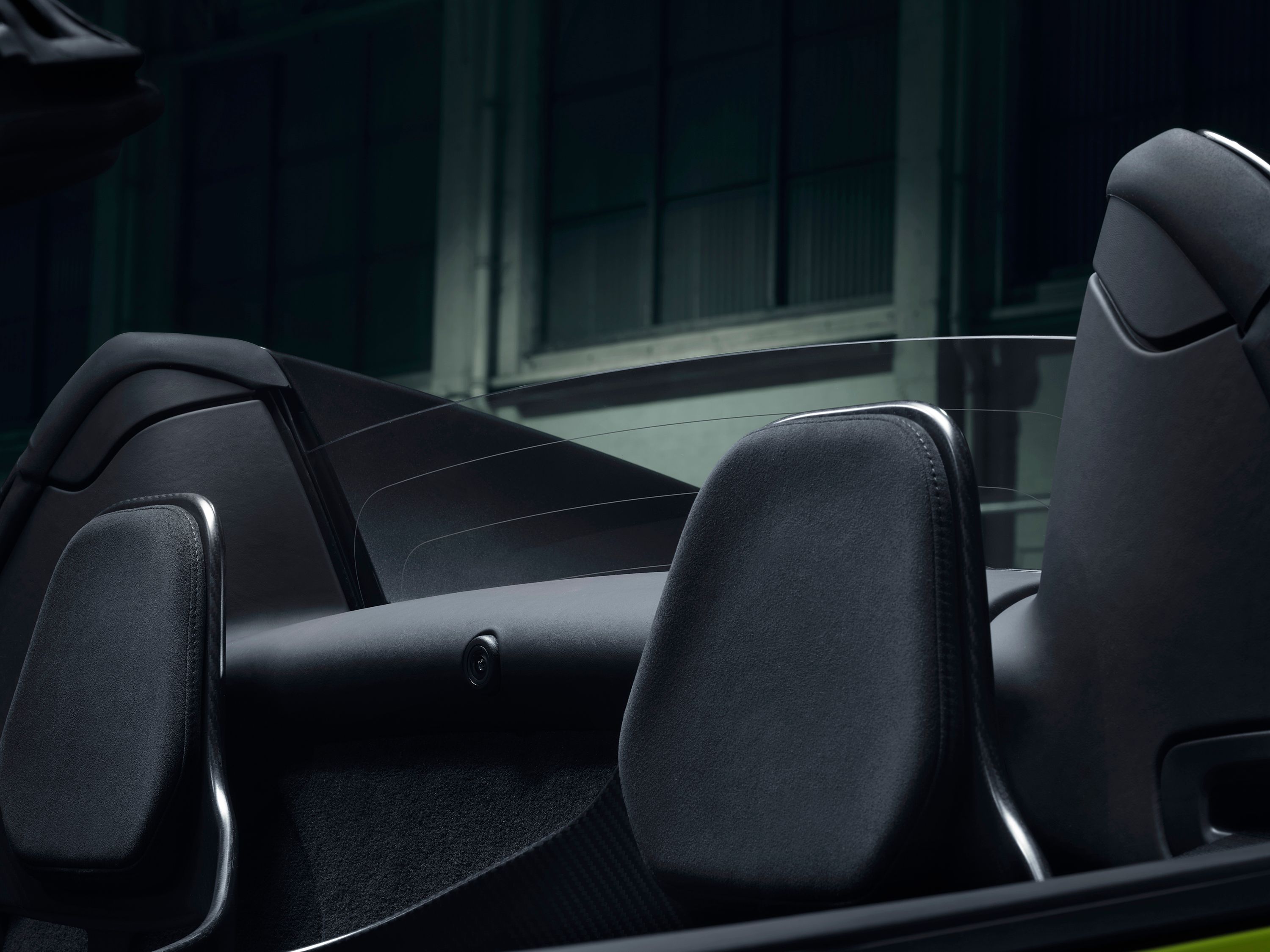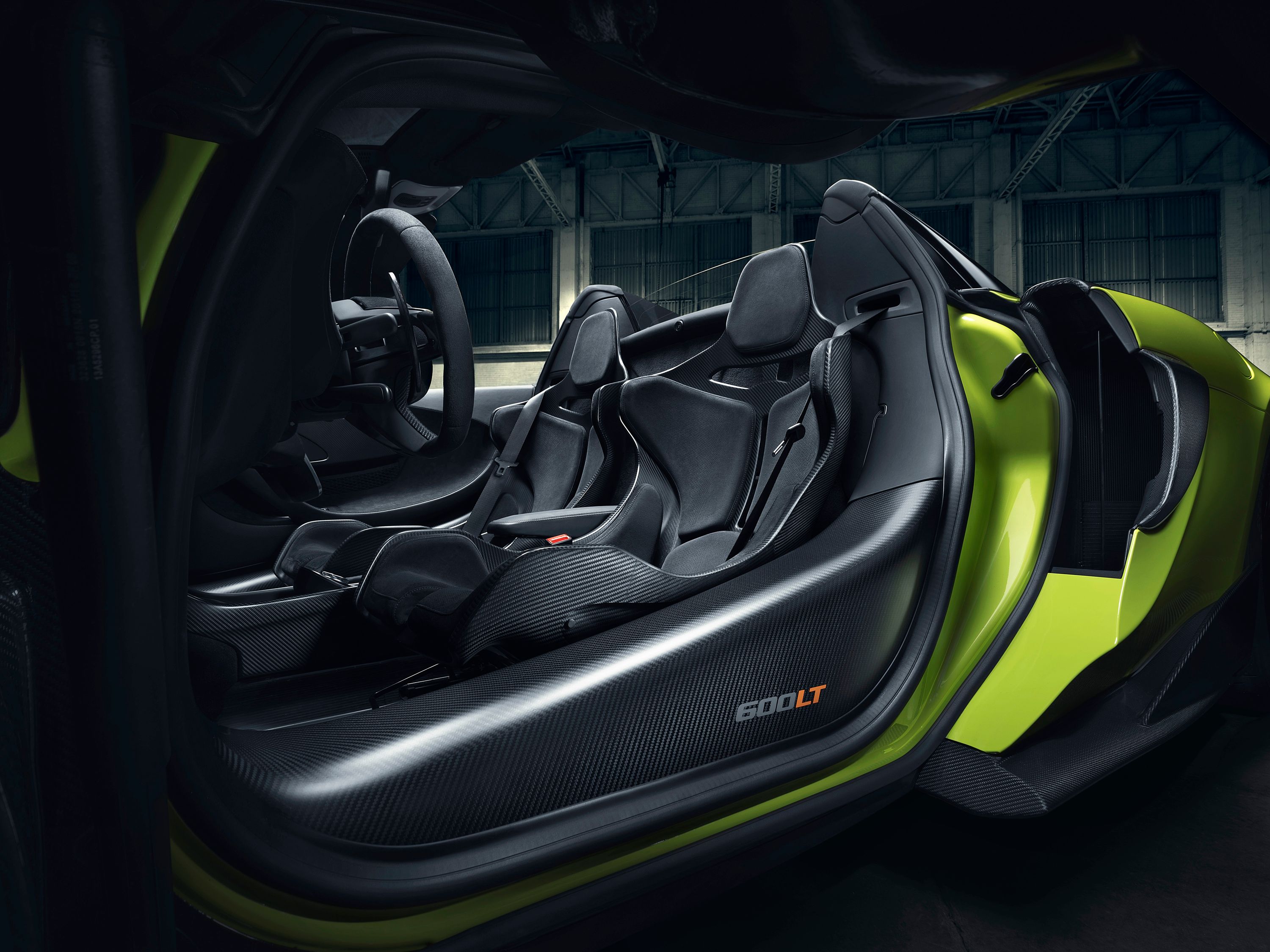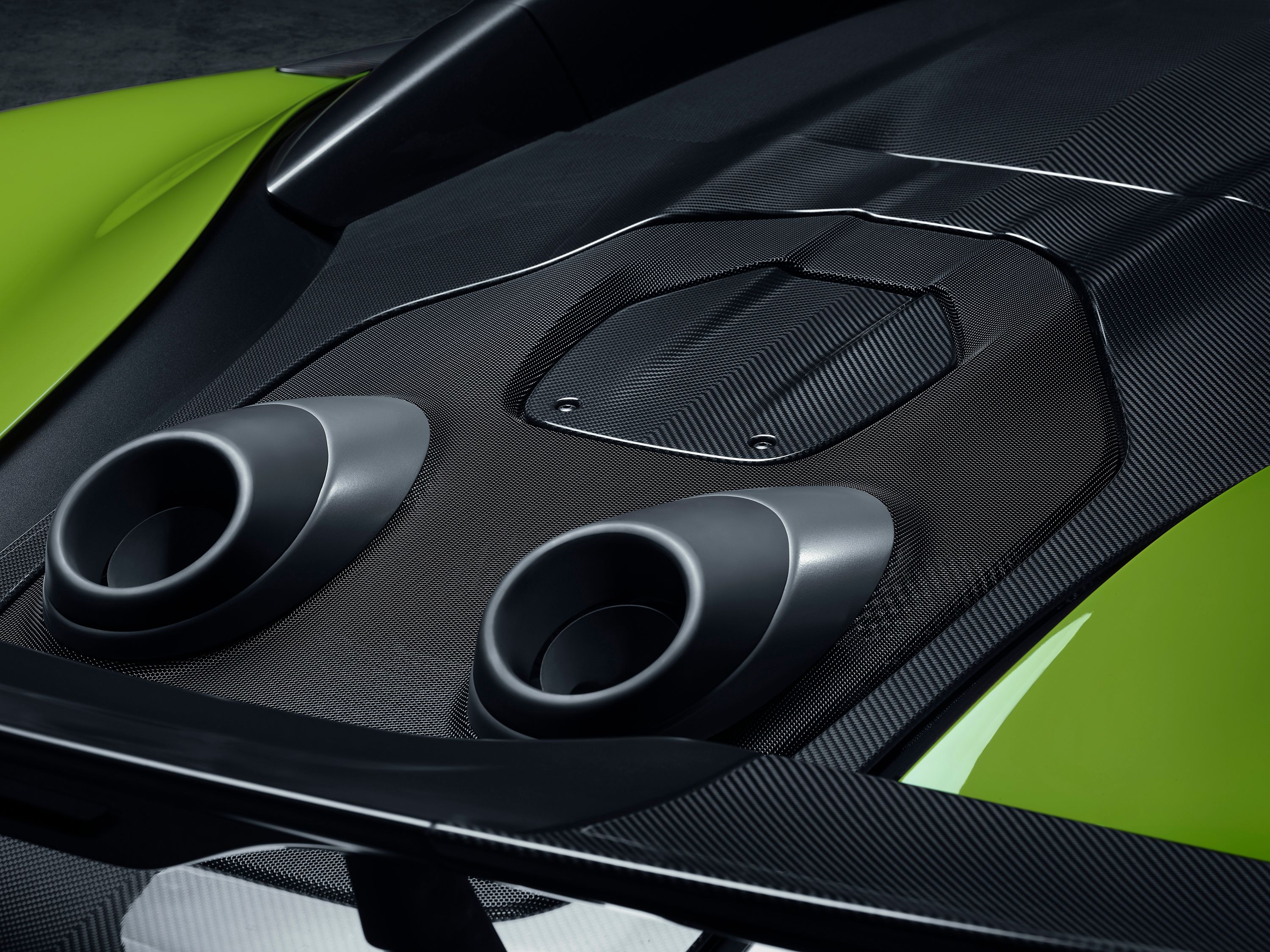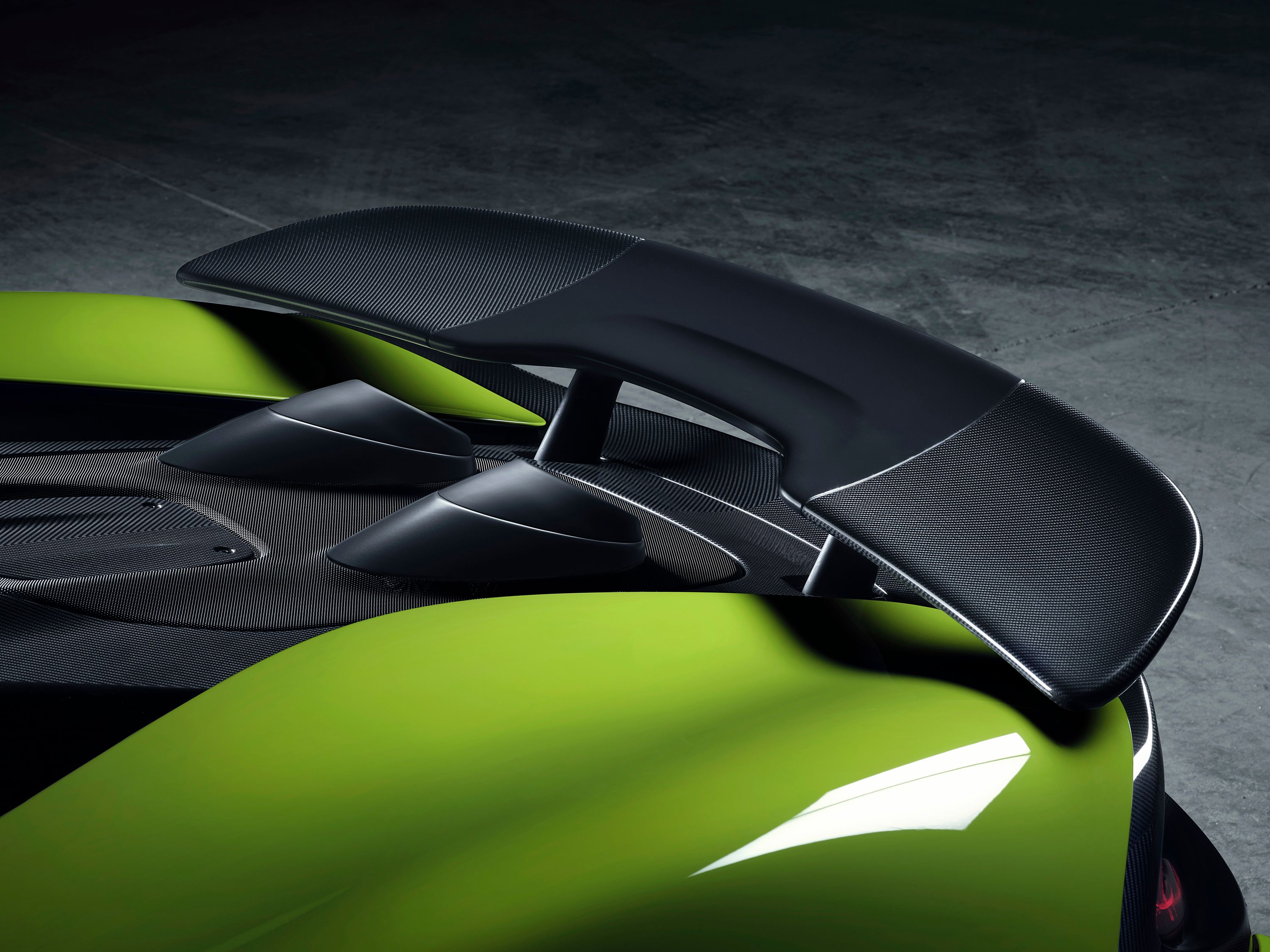The McLaren 600LT Spider is one of the few drop-top sports cars with barely any compromises over the coupe. It's just 110 pounds heavier than the fixed-head version but, besides that, it offers the same 592 horsepower and 457 pound-feet of torque from the 3.8-liter twin-turbocharged V-8 engine. The catch? It costs almost $50,000 more than the 570S Spider that McLaren used as a starting point for the LT.
After teasing us with a video just a few days ago, McLaren finally released the official images of the mighty 600LT Spider. Again, LT stands for 'Long-Tail,' but there is no long tail on this car to speak of, it's merely as a pale homage to the Le Mans class-winning McLaren F1 GTR from 22 years ago. What you do get, though, is a highly competent track beast with the added benefit of being able to allow the elements to take their toll on you when the roof's down.
If you like what you're hearing you should rush to pre-order one because McLaren said that the production would be limited with "build slots scheduled around other Sports and Super Series models." Production is said to commence in March and will go on for a year. The only problem with the 600LT Spider is, frankly, the existence of the Ferrari 488 Pista Spider with its 710 horsepower, 568 pound-feet of torque that's likely quicker although it also costs a lot more as well.
2019 McLaren 600LT Spider
- Make: Array
- Model: 2019 McLaren 600LT Spider
- Engine/Motor: V8
- Horsepower: 592
- Torque: 457
- [do not use] Vehicle Model: Array
2019 McLaren 600LT Spider Exterior
The McLaren 600LT Spider is yet another limited-run very fast car from Woking that will blow away almost anybody who's lucky enough to get behind its steering wheel and drive it. So, why does it matter? We're seeing supercar makers release model after model to the point that it's almost tiring to keep track of everything that goes on. So, for those that are already tired of keeping track of McLaren's models with their combinations of numbers and letters here's what you need to know: the 600LT is the lighter, nimbler, faster, and more track-ready version of the 570S, McLaren's entry-level car. It's basically a cut below the enchanting 675LT which, in itself, is an updated version of the 650S.
The 600LT is, according to McLaren, the company's fifth ever 'LT' model. 'How did they count that?', I hear you asking... well, they dared to include the race-going McLaren F1 GTR Long Tail - or maybe its road-going homologation brethren, the GT - in the mix as well. Why is that? Well, because the F1 GTR of 1997 is the spiritual forefather of all these LTs you can drive on the road today as all of them share the same philosophy to some extent: shedding weight, creature comforts as well as some clever systems in favor of a more direct and pure driving experience in a car that's very much tuned for the smooth ribbon of road that we commonly refer to as a 'road course'.
Any sports car racing fan would get up and bemoan the heresy that's taking place right in front of his or her eyes. After all, the McLaren F1 GTR Long-Tail is a brilliant race car that has little to do even with the standard F1 road car, let alone these modern supercars. But it's a good excuse for me to tell you why that car that appeared in 1997 and only smelled the fresh air of race days until 1999 matters and why McLaren clings to the designation, to begin with.
First off, the 'Long-Tail' phenomenon appeared in the '60s. Granted, it was already common knowledge by then that slippery designs reduced drag and less drag meant the car made a smaller hole through the air and that helped it go faster. But, by the '60s, manufacturers competing at Le Mans found out that attaching a teardrop-like piece of bodywork to the back of their cars helped streamline the design and make them go even faster than before.
Why was speed so important at Circuit de la Sarthe? Well, that's due to the fact that the road course - in the literal sense of the phrase since it was made up of public roads even more than today - comprised of a series of flat out straight sections of typically-French B roads, the longest of which was the Mulsanne Straight, also known as Les Haunaudieres. It was 3.7 miles long in its heyday before cars got the 249 mph mark down there and the organizers decided that a couple of chicanes were needed to slow things down. Still, the long tails lived on after 1990, the first year of the double-interrupted Mulsanne Straight, and, for 1997, McLaren introduced the F1 GTR LT in the GT1 class. For that year, the rules became even more permissive as manufacturers only had to build 1 (ONE) road-going example of their "grand touring" race car which meant development could reach properly ludicrous levels.
To stay ahead of the curve, McLaren, who'd dominated the BPR Global GT Series with the standard F1 GTR, redesigned the car from end to end in the off-season between '96 and '97.
What this brief time travel back to the late '90s tells us is that McLaren banks on a bit of its heritage that, frankly, is almost unknown to most of the 500-odd people that will own one of these. You can make what you want of this information but, at the end of the day, the 600LT is a bit of a looker, especially from the front.
The pointed tip of the front end is further underlined by the presence of two creases that run from the A-pillars all the way down the front hood to the left and the right of the McLaren badge. The front fenders have extra louvered air vents on top of them to help some of the air get out.
The side of the car is quite dramatic with the black-painted rear buttresses, the protruding side skirts that raise up at both ends, with the 600LT logo glued to the fin up front, and the black styling element that runs across the doors and the front fenders. This latter element incorporates the rear quarter panel air vents that open up on both sides. However, when you view the car's profile, you don't notice that the scoops edge out further than the line of the door panels that's actually a bit recessed along that black contour. That's why the whole element is a dead ringer to McLaren's old logo from back in the '70s. It's basically a stylized Kiwi bird, New Zealand's national animal.
The 600LT Spider's back end is a complicated place. You've got the chiseled fenders that make way for carbon fiber extensions just behind the rear wheels, you've got the giant diffuser, the thin LED taillights and that very functional and serious-looking wing too.
2019 McLaren 600LT Spider Exterior Dimensions
|
Length |
181.25 inches |
|
Height |
74.4 inches |
|
Width |
82.45 |
2019 McLaren 600LT Spider Interior
The interior of the 600LT Spider is the same as the coupe's.
Once in, you're hugged by the carbon fiber bucket seats and invited to grip the semi-circular steering wheel in front of you. The wheel itself has carbon fiber rims and is devoided of buttons, apart from two switches that stick out from behind. The paddles are right behind placed on a single rocker. A digital display tells you everything you need to know while driving and you get a central screen too for the infotainment system.
This vertical screen is somewhat small and sits above some plasticky buttons including the main control knob which naturally has the McLaren logo printed on it.
It's worth pointing out that, when the roof's up, you have an additional 1.8 cubic feet of cargo space in the area that otherwise hosts the tonneau. According to McLaren, you can raise or lower the hardtop at speeds up to 25 mph.
2019 McLaren 600LT Spider Drivetrain
The 600LT Coupe and the 600LT Spider share the same underpinnings as you might've expected. Behind the seats, there's the same tweaked M838TE twin-turbocharged 3.8-liter V-8 engine with its linear power delivery as well as just enough of a kick to remind you that you aren't peddling a naturally-aspirated supercar. The engine has a flat-plane crank, dry sump lubrication, and the same updates when it comes to cooling as the Coupe.
Yes, the Monocell II carbon fiber chassis is strong enough to not require extra elements to strengthen its lateral rigidity but you will only get down to 2,859 pounds if you spec your car with the fewest creature comforts possible and the lightest parts. For starters, you need the MSO Clubsport Pack that costs about $23,400 on its own that adds many of the carbon bits you see on this green example. Then, you have to ditch the P1-sourced seats for lighter ones from the Senna.
You'll also have to revoke the installation of both the climate control system and the radio, as well as the titanium wheel nuts that shave some unsprung weight too from those gorgeous 10-spoke magnesium wheels with a diameter of 19 inches up front and 20 inches at the rear. The tires that come from the factory on this car are Pirelli P-Zero Trofeo Rs.
Only then will your 600LT Spider be lighter than a 488 Pista Spider although the 108 horsepower gap remains.
Suspension on the 600LT Spider, as is the case with other cars from the 'Sports Series, is by double wishbones at all four corners with adaptive dampers and anti-roll bars. The 570S, though, benefits from the presence of the hydraulically-linked Pro Chassis Control suspension system, but McLaren did not put it on the 600LT to save some pounds.
It will take some time before somebody translates these numbers into words, describing the open-top driving experience of the 600LT Spider. However, if the 600LT is any indication, the Spider will be an amazing track car and maybe an acceptable road car with the top down so you don't hear all the rattles and noise due to the missing sound insulation. Top Gear had this to say about the coupe: "This is the one thing I took away from the 600LT – the sheer feel, accuracy, precision and control it gives you. In this regard, it’s even more impressive than the 675LT."
2019 McLaren 600LT Spider Specifications
|
Engine |
Twin-turbocharged, 32-valve, DOHC VVT, 3.8-liter V-8 |
|
Horsepower |
592 HP @ 7,500 RPM |
|
Torque |
457 LB-FT @ 5,500-6,500 RPM |
|
Lubrication |
Dry sump |
|
0 to 60 mph |
2.8 seconds |
|
0 to 124 mph |
8.4 seconds |
|
Top speed |
201 mph (roof up) and 196 mph (roof down) |
|
Suspension |
double wishbones front and rear with adaptive dampers and anti-roll bars |
|
Steering |
Rack and pinion |
|
Transmission |
7-speed dual-clutch SSG semi-automatic transmission |
|
Weight |
2,859 pounds (lowest possible) |
2019 McLaren 600LT Spider Prices
The McLaren 600LT Spider with its MSO-built body doesn't come cheap.
The Huracan Performante Spyder starts at $308,859 plus taxes while the Ferrari 488 Pista Spider should be even more expensive than that. The fixed-head version already costs $350,000 and usually, the open-top version is about $20,000 to $40,000 steeper. The 600LT Spider is, naturally, cheaper also than the original asking price for the 675LT - $372,600. However, a 570S Spider would set you back just $208,800 and you have to decide if the 600LT is worth the extra $51,000 or two brand-new Mazda Miata or one Audi A4 and $5,000 worth of change.
2019 McLaren 600LT Spider Competition
Lamborghini Huracan Performante Spyder
Like the McLaren, the most extreme open-top Huracan out there also has a 7-speed dual-clutch transmission. Unlike the McLaren, however, the Italian thoroughbred is powered by a naturally-aspirated 5.2-liter V-10 that develops 640 horsepower. In spite of that and the presence of the ALA active aero system, the Performante Spyder takes about the same to reach 62 mph. This could be because the Lambo weighs in at 3,322 pounds, 272 pounds more than the coupe which lapped the ring in under seven minutes and 463 pounds over the 600LT Spider.
Like the McLaren, the Performante has a fixed carbon fiber rear wing, carbon fiber rocker panels, carbon fiber interior elements and a carbon fiber lower lip up front. The two are, then, quite similar but the McLaren doesn't have geared steering. This is an interesting feature on the Lamborghini that's optional and only works in the 'Corsa' driving mode. Once there, this system basically has you rotating the steering wheel less to get the same amount of turning angle and we all know why that's good if you're on a track.
Depending on the driving modes, the active aero system offers you less or more drag. The things that actually move are some flaps that can even act independently to help you corner better, again, if you're on a road course. The Performante Spider, with its ear-splitting V-10 that offers max power at 8,400 rpm and comes with titanium valves is arguably a prettier proposition but it's also slower on track and more expensive. But 'Lamborghini' will always be a flashier and more recognizable name than 'McLaren'.
Read our full review on the 2018 Lamborghini Huracan Performante Spyder
Ferrari 488 Pista Spider
Ferrari, though, is the easiest brand to recognize of the lot and, for the past decade or so, it's gotten into a rhythm where it only spits out cars that effectively push the competition to return to the drawing boards because of how competent they are and how high up they raise the bar. The 488 Pista Spider shapes up to be cut from the same mold considering the rave reviews its fixed-head brother gets.
We first saw it at Pebble Beach before being showcased at last year's Paris Auto Show. The oomph comes from the phenomenal 3.9-liter twin-turbocharged V-8 with 710 horsepower and 568 pound-feet of torque. Somehow, Ferrari managed to keep the weight of the coupe and the spider on par at 3,043 pounds - still 183 pounds more than the McLaren.
Sadly, that's shallow bragging rights that the 600LT is bagging because the Pista Spider will do 0 to 62 mph in 2.8 seconds and reach a top speed of 211 mph with the top up, so the added weight does not affect performance in any way shape or form. Granted, you have to go for all the lightweight components Ferrari offers for the 488 Pista Spider to weigh under 3,050 pounds, but Woking has prepared the same story anyway.
The Ferrari also has active aerodynamics and that massive hole up front that scoops up the air and directs it along the bodywork towards the back. It also has the ‘Ferrari Dynamic Enhancer’, which is a new lateral dynamics control setup, said to make “on-the-limit driving more intuitive, controllable and predictable”. Chris Harris said that the 488 Pista in coupe form is "dynamically, the best car Ferrari has ever made, and its powertrain sits at the heart of its success." In drop-top guise, it should be about as good but is the $80,000-$90,000 premium worth it? You've got to decide if that Ferrari logo on the hood, fenders and rear end matters that much to you or if you can even afford it to begin with.
Read our full review on the 2019 Ferrari 488 Pista Spider
Conclusion
McLaren has comprehensively upped their game in the past few years and the 600LT is a 'living and breathing' proof of that. The roofless version has every right to be just as amazing as the coupe and a potent rival to both the Huracan Performance Spyder and the 488 Pista Spider while being cheaper than both.
Yes, you won't get the drama of the Huracan's wedge shape body and its loud naturally-aspirated V-10, or the appreciative/envious looks of everyone who finds out you drive a Ferrari, but does it matter? It depends on the buyer at the end of the day, but if you buy this car to use it as it was intended, you won't be disappointed at all.
Further Reading
Read our full review on the 2019 McLaren 600LT.
Read our full review on the 2018 McLaren 570S Spider.
Read our full review on the 2017 McLaren 675 LT Spider.


